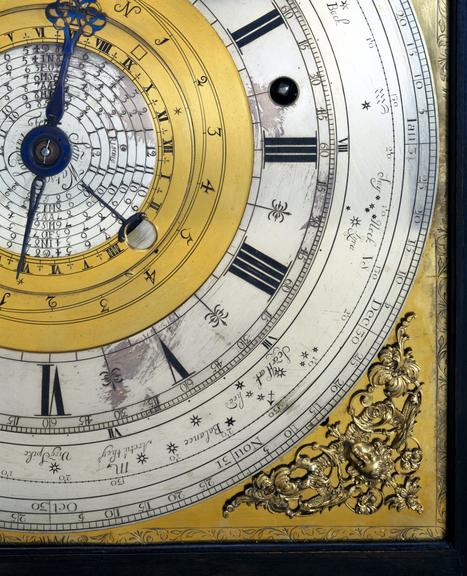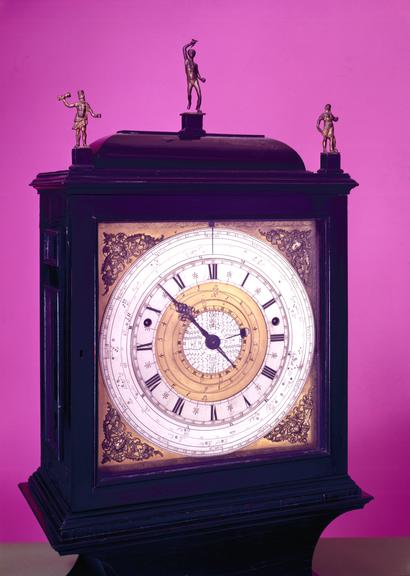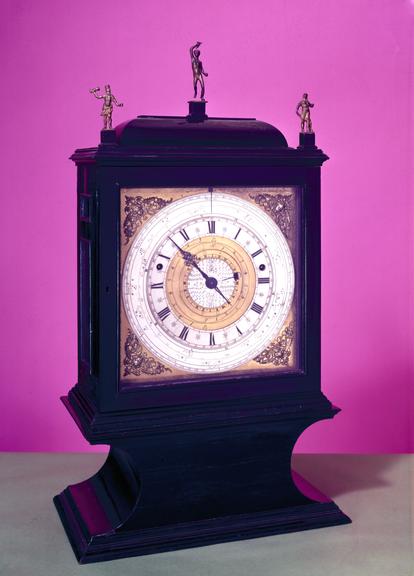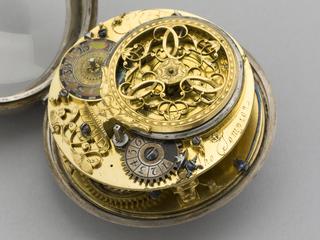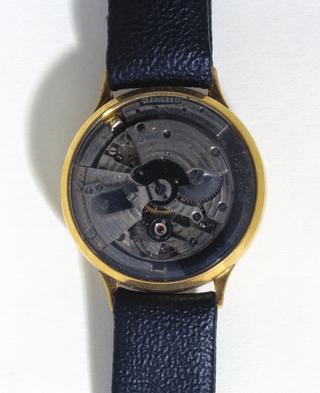Pedestal astronomical clock by Samuel Watson
Pedestal astronomical clock by Samuel Watson, London, England, in ebonised case, with one cranked winding key and two door keys, 1690-1710.
Time Measurement gallery label: ASTRONOMICAL CLOCK A pedestal clock, signed Samuel Watson, London, and made about 1695. It is the earliest English astronomical clock in which the sun is fixed, on the Copernican principle, and it shows, besides the time of day, the date, the position of the sun in the Zodiac, the phase of the moon and its latitude (important for eclipse predicitons), and the times of sunrise and of moonrise and moonset; the time of high tide at London Bridge can also be read off. Samuel Watson was born in Coventry about 1635 and worked there until about 1690, when he moved to London. He died about 1710. A much more elaborate astronomical clock was made by Watson over the period 1683 to 1690, to the order of King Charles II; this clock is now in the Royal Library at Windsor Castle.
- Measurements:
-
Overall: 1000 mm x 570 mm x 340 mm, 31 kg
- Materials:
- brass (copper, zinc alloy) , bronze (copper, tin alloy) , wood (unidentified) , glass and steel (metal)
- Object Number:
- 1970-25 Pt1










